Living in a small space can feel a little like solving a puzzle—how do you fit everything you need while still making the room feel open, comfortable, and stylish? As someone who’s spent plenty of time trying to figure this out, I’ve discovered a few tricks that can make all the difference. The right furniture can transform a cramped room into a cozy, functional haven. Here are some expert tips that have worked wonders for me, and I’m sure they’ll help you too.
1. Opt For Multifunctional Furniture
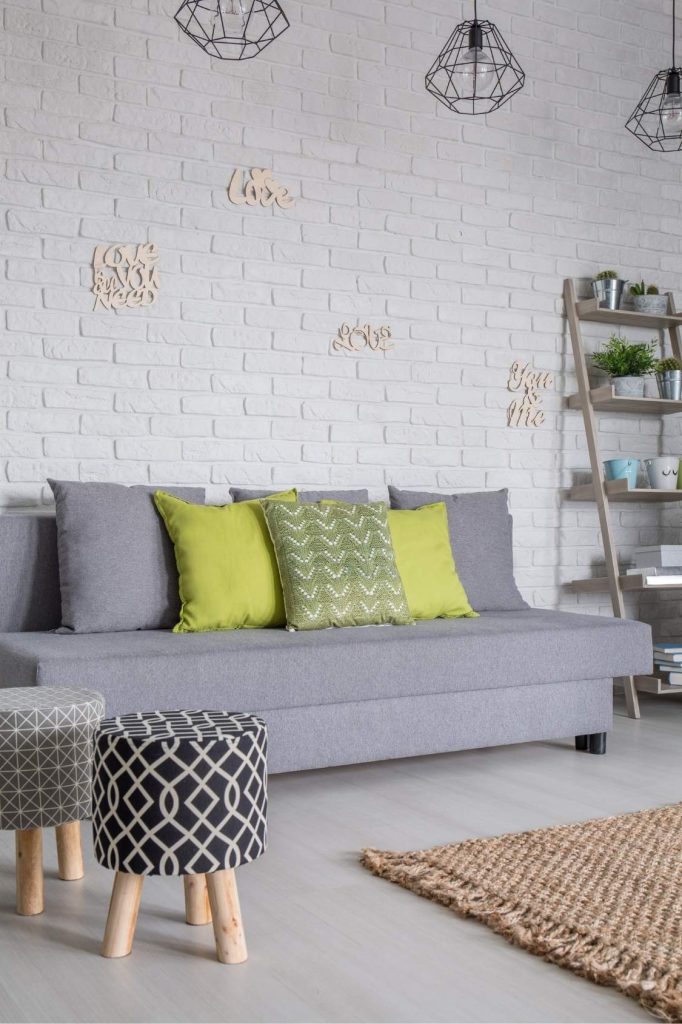
When you’re working with limited square footage, multifunctional furniture is your best friend. A sofa bed, for example, can do double duty as both a comfortable place to relax and a place to sleep when guests come over. Or a fold-out desk that can easily be tucked away when you need more space—these are game-changers.
I’ve used a storage ottoman in my living room, and it’s been a life-saver. Not only does it work as extra seating, but it also provides hidden storage for things like blankets and throw pillows. The key is finding pieces that serve more than one purpose without sacrificing style.
2. Go For Light and Neutral Colors

Dark colors can make a room feel smaller and more cramped, while lighter colors create a sense of openness. When selecting furniture, look for neutral tones like soft greys, whites, and pastels. These colors won’t overwhelm the space, and they reflect more light, giving the illusion of a larger room.
For instance, I chose a light grey sectional for my living room, and it instantly opened up the space, even though it’s still a relatively large piece of furniture. Pairing light-colored furniture with mirrors or glass tables can also reflect light and make the room feel more airy.
3. Choose Furniture That Doesn’t Overwhelm the Space
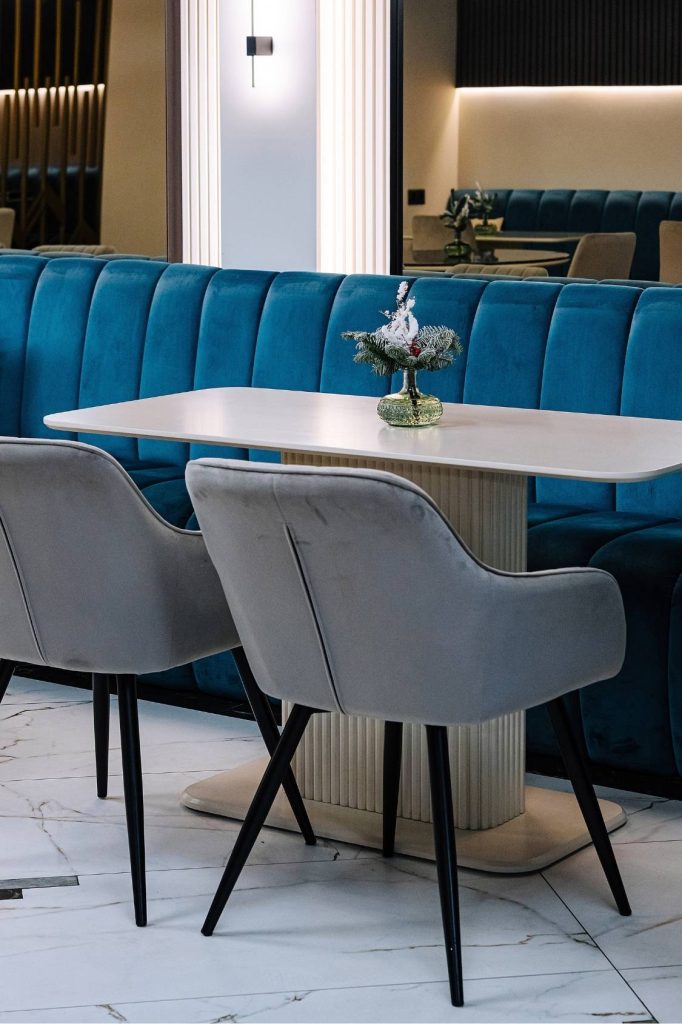
In a small room, the last thing you want is oversized furniture that dominates the space. Stick with slim, streamlined pieces that don’t take up too much visual or physical space. A low-profile sofa or a compact dining table can work wonders.
One trick I’ve found useful is choosing furniture with legs that expose the floor underneath. It creates a sense of more space by allowing the eye to move freely beneath the furniture. A mid-century modern chair with wooden legs, for example, gives the room an open, light feel.
4. Use Vertical Space
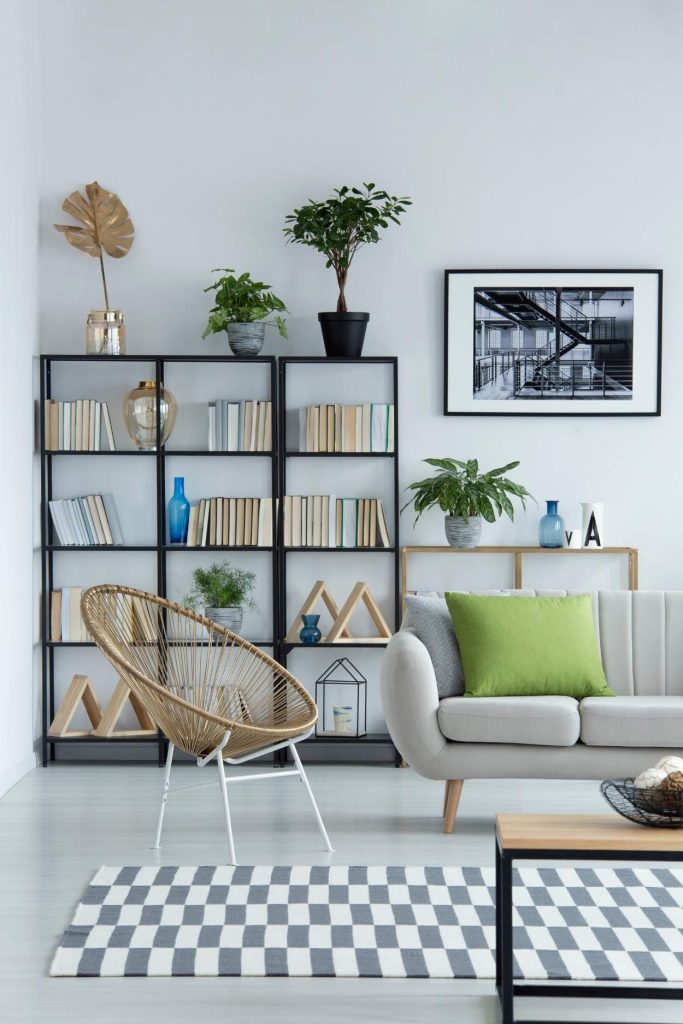
When floor space is limited, it’s time to think upwards. Look for tall bookshelves or wall-mounted desks that use vertical space instead of taking up precious floor area. This not only frees up more space but also creates a beautiful, layered look.
I added a tall, narrow bookshelf along one wall, which gave me plenty of storage for my books and decor without crowding the floor. It’s a small change, but it made a big difference. Plus, it draws the eye upward, making the room feel taller than it actually is.
5. Incorporate Foldable and Stackable Furniture
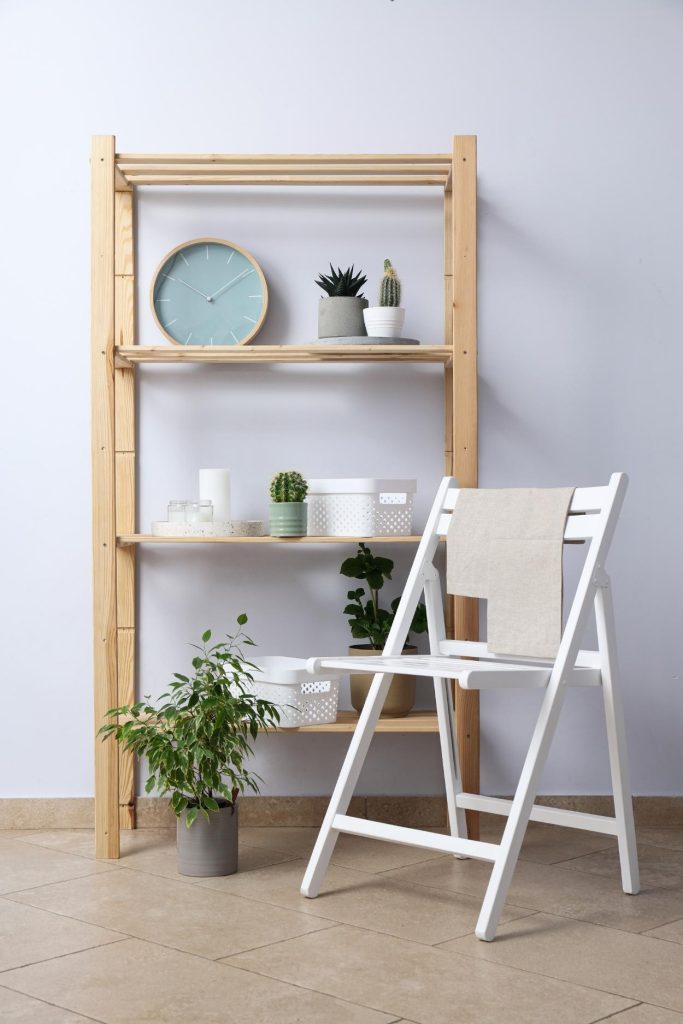
Another genius space-saving trick is to use foldable furniture or stackable chairs. These pieces can be tucked away when not in use, allowing for maximum flexibility in your space.
For example, I invested in a set of stackable dining chairs that I only bring out when I have guests over. When not in use, they’re neatly stacked in the corner, out of sight, but ready to be used at a moment’s notice. This way, my dining area doesn’t feel crowded, even when it’s fully occupied.
6. Embrace Open-Concept Furniture
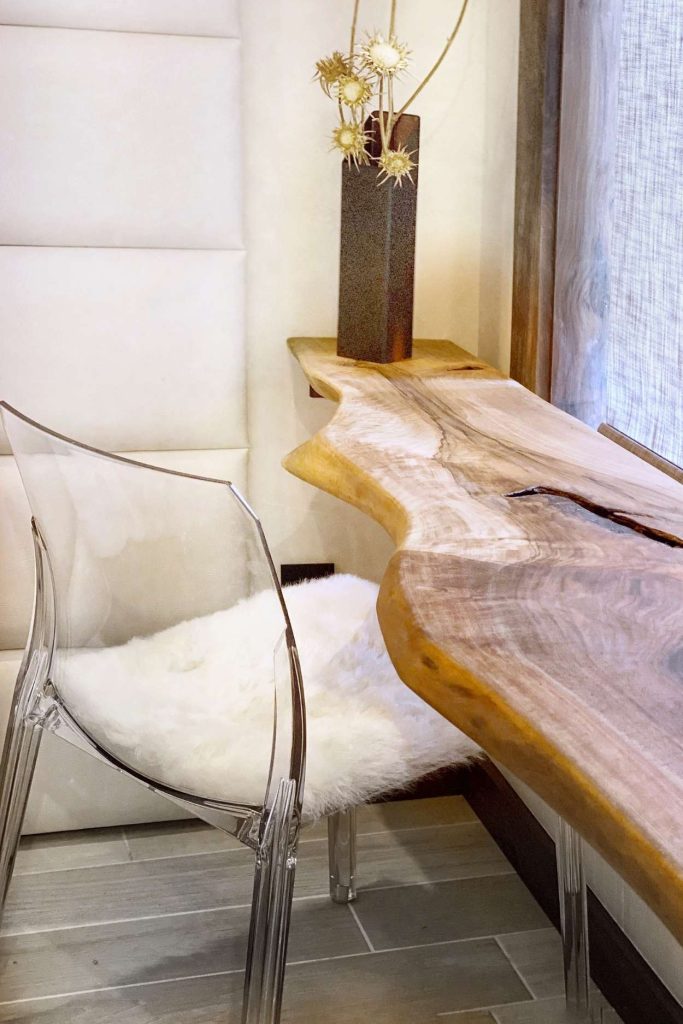
Open-concept furniture means less bulk and more airiness. Instead of heavy, solid furniture, look for pieces with open frames—like an open-shelved coffee table or transparent acrylic chairs. These types of pieces make the room feel lighter because there’s more space between them.
I’ve been using an open-shelved TV stand in my apartment, which keeps everything organized but doesn’t block the view of the floor or wall. It gives the room a sense of openness, and I can still store everything I need without sacrificing space.
7. Opt for Custom or Built-in Furniture
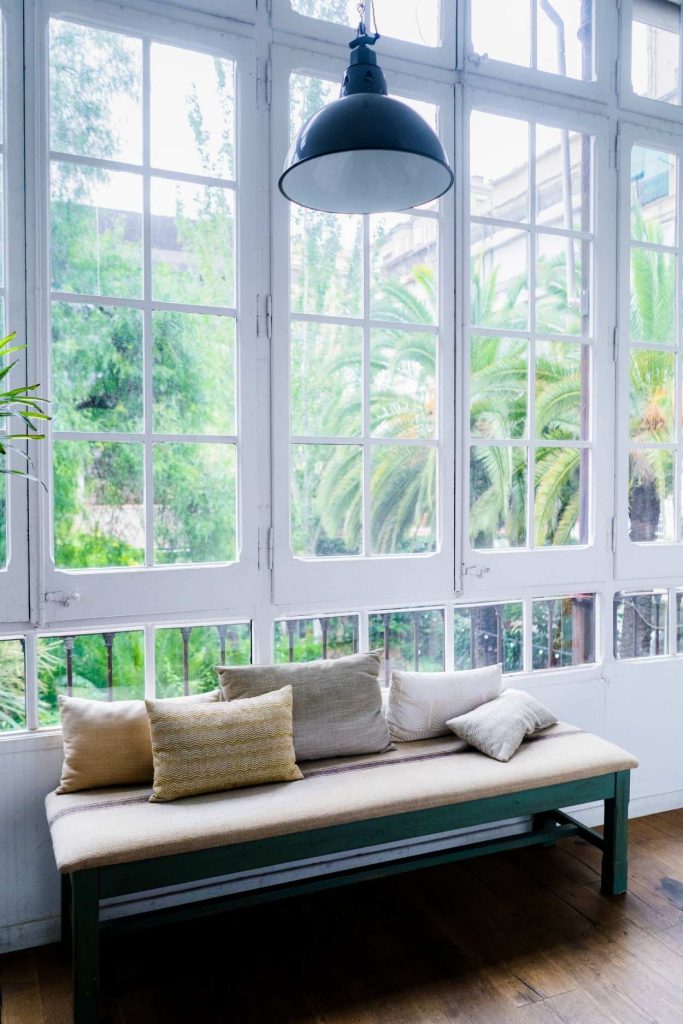
Custom or built-in furniture can be a lifesaver when you’re working with a particularly tricky layout. Built-in storage units, window seats, or even a customized wardrobe can be designed to fit perfectly in the available space, maximizing every inch.
For my small bedroom, I had a custom closet built that utilized the awkward corner space. It’s tailored to my needs and makes the room feel much more organized and spacious. Custom furniture is often a little more of an investment, but it’s worth it for the long-term benefits in small spaces.
8. Declutter and Keep It Simple
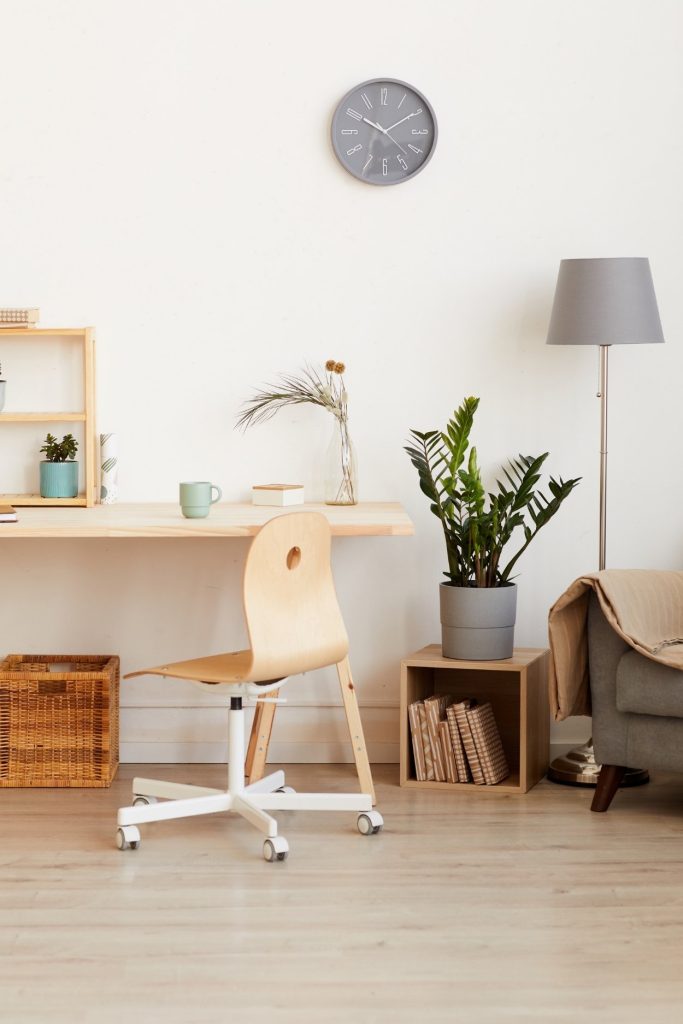
Lastly, the best way to make your small space feel more expansive is to keep things simple. Avoid overcrowding the room with too many pieces of furniture. Choose your essentials and let them shine.
Over the years, I’ve learned that less is more. I only keep the furniture I absolutely love and need, and I make sure there’s plenty of room between each piece to create a sense of flow. It might take a little trial and error, but once you get the right balance, your space will feel a lot bigger than it is.
9. Choose Furniture with Transparent or Minimalist Features
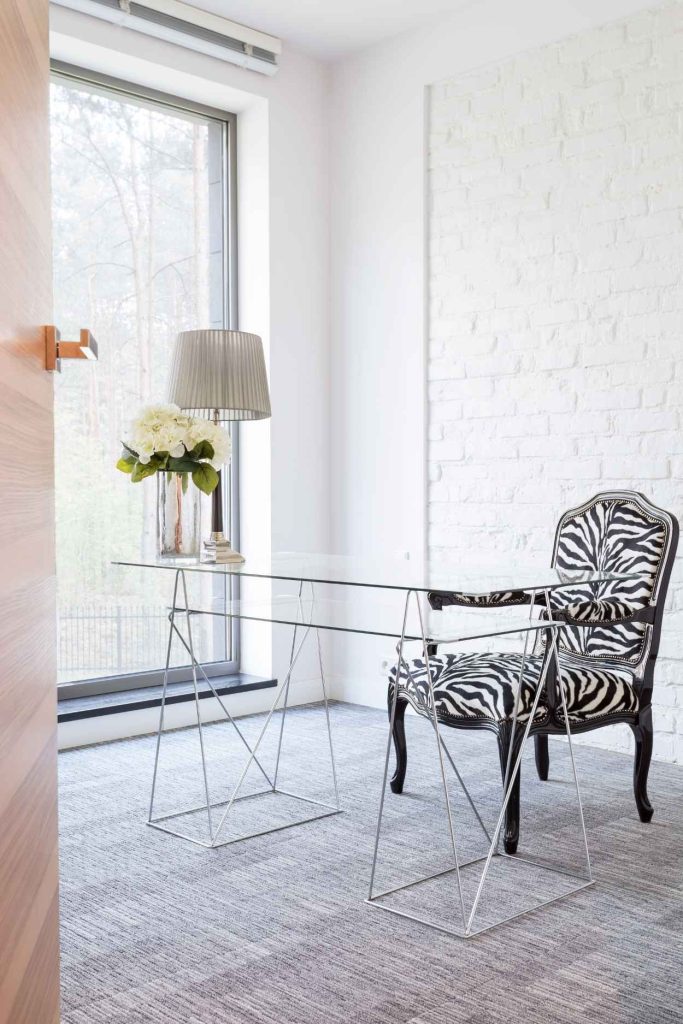
If you’re struggling with finding pieces that fit without overcrowding, transparent or minimalist furniture is a fantastic option. Glass tables, acrylic chairs, and metal-framed shelving units help maintain the open, airy feel of a room. Their transparent nature allows the space to feel less cluttered, as they don’t take up much visual weight.
I swapped out a bulky coffee table for a glass top table with metal legs, and it made my small living room feel instantly more spacious. It’s subtle but still functional, and I can place some decorative books and a plant on it without feeling overwhelmed by the piece itself.
10. Use Ottomans for Dual Purpose
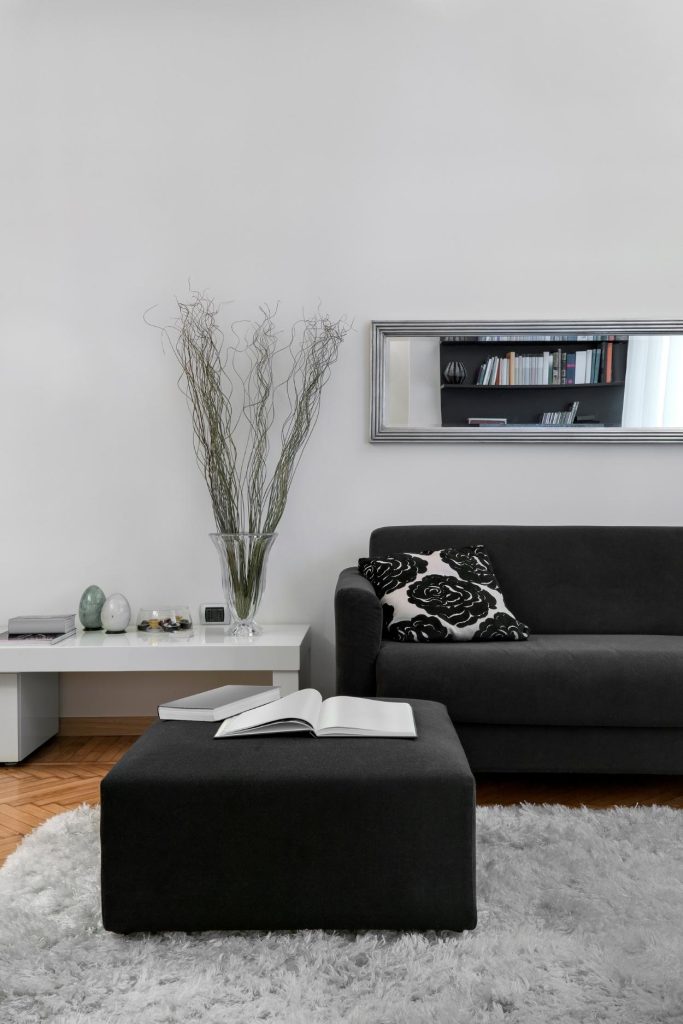
Ottomans are a wonderful multifunctional piece of furniture, especially in small spaces. You can use them as footrests, additional seating, or even storage solutions. The versatility of ottomans makes them perfect for any room where space is at a premium.
I personally love using an ottoman with hidden storage in my entryway. It works as both a place to sit while putting on shoes and a spot to stash away things like scarves, hats, or shoes I don’t use often. Look for ottomans that double as a coffee table or feature built-in compartments for even more space-saving magic.
11. Consider Furniture on Casters or Wheels
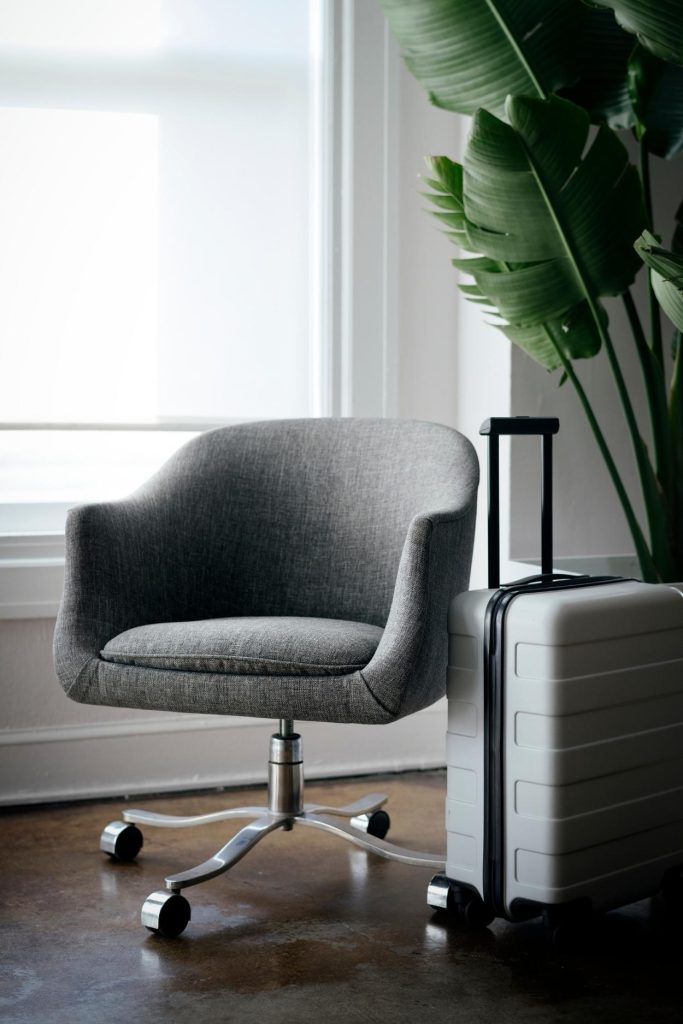
Furniture on wheels can offer flexibility and mobility, something every small space can benefit from. Rolling carts, chairs with wheels, and movable desks allow you to rearrange your space easily based on your needs.
In my apartment, I swapped my rigid bookshelves for a mobile cart-style bookshelf. It’s so easy to move it from one area to another when I need to switch up my layout, or if I need the extra space for a gathering. I highly recommend finding pieces on wheels for their practicality, especially in multifunctional spaces.
12. Incorporate Vertical Storage Solutions
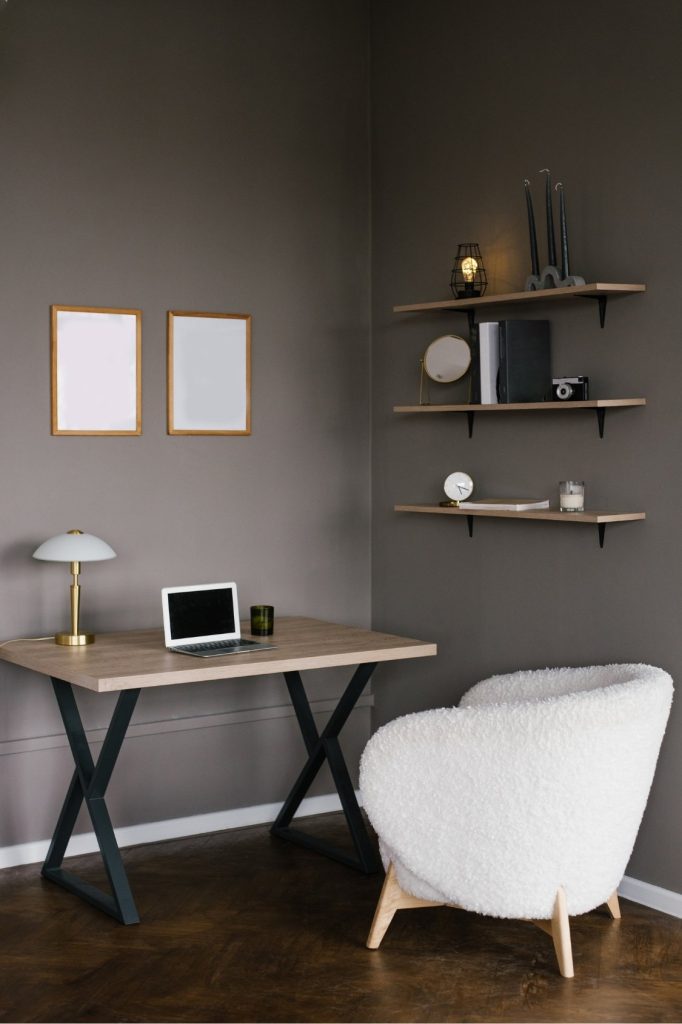
Sometimes the best way to save space isn’t by focusing on the furniture itself, but on the way you store things. Wall-mounted shelves, floating desks, and hanging storage units make great use of vertical space while keeping the floor clear.
For my home office, I installed floating shelves above my desk. It’s amazing how much extra storage space this created, and it doesn’t make the room feel cramped. Vertical storage also draws the eye upward, making the room feel larger and more open.
13. Think About Scale and Proportions
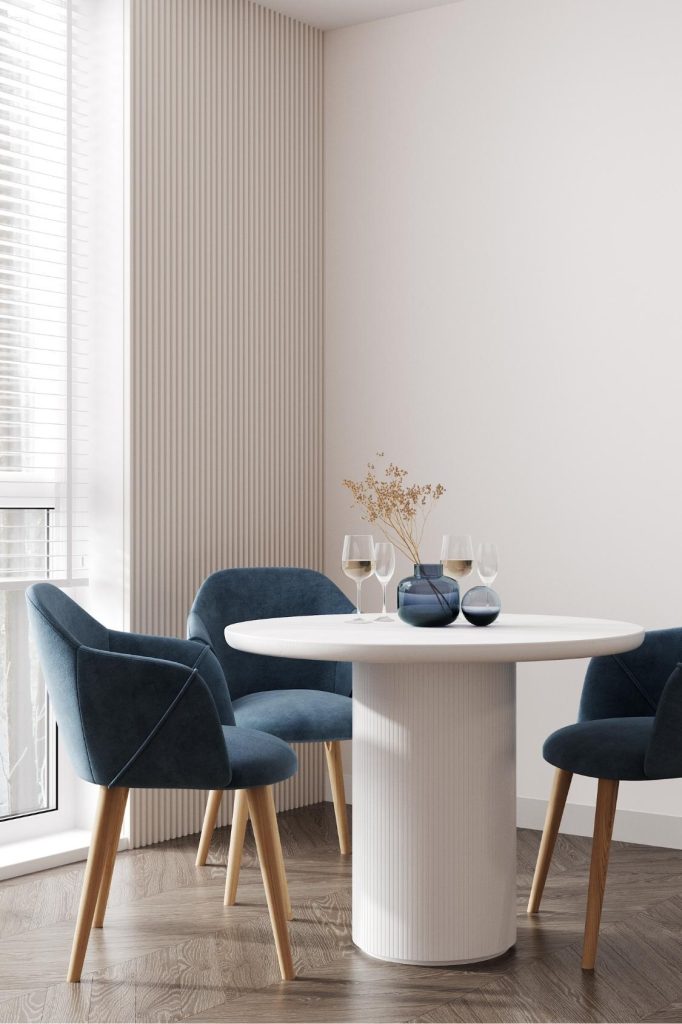
When selecting furniture, scale and proportion are everything. Furniture that is too large will overwhelm a small room, while furniture that’s too small might look out of place. Finding pieces that are proportional to the size of the room is key.I went through a few trial and errors when I was selecting my dining table, but I finally settled on a round table that seats four. Not only does it fit perfectly in my small dining area, but its rounded edges also prevent it from feeling too boxy or imposing. When choosing any piece, pay attention to the size of the room and the scale of the furniture to ensure everything fits in harmony.
Conclusion: Make Your Small Space Work for You
Choosing the perfect furniture for small spaces isn’t about compromising on style or comfort—it’s about making smart choices that maximize functionality without overwhelming the room. By opting for multifunctional pieces, light colors, and space-saving designs, you can create a space that feels larger, more organized, and much more welcoming.
Whether you’re working with a cozy studio apartment or a small living room, there’s no reason you can’t make the most of your space. Start by incorporating a few of these tips and see how your space transforms into a functional and stylish haven.

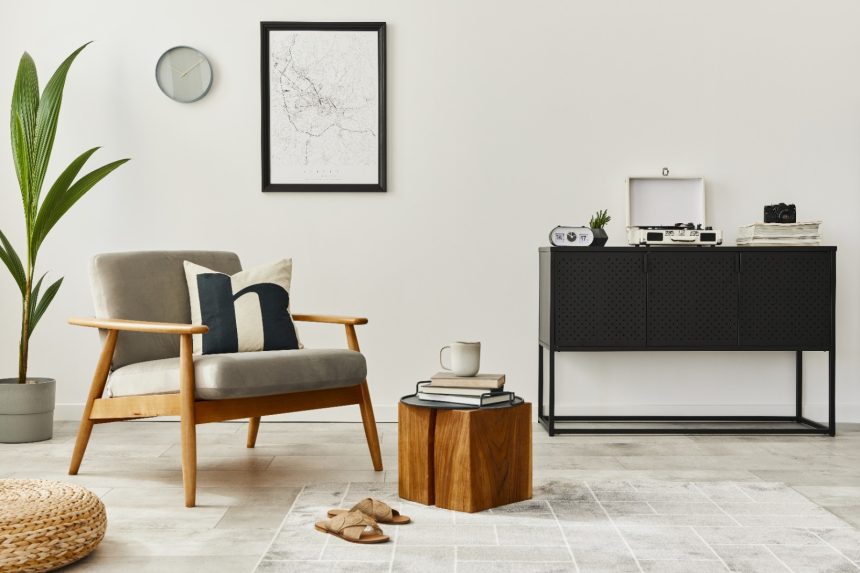
Leave a Reply